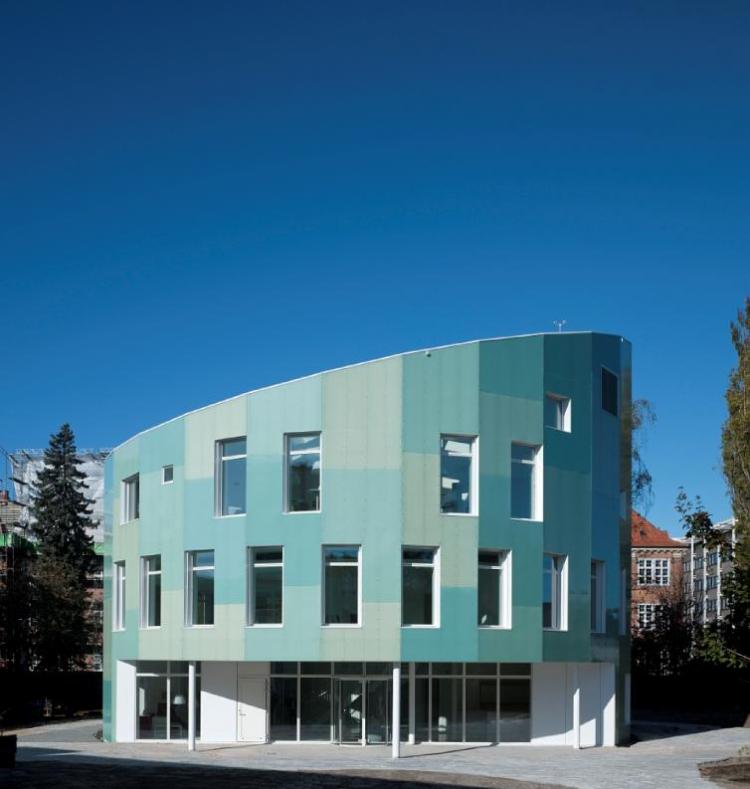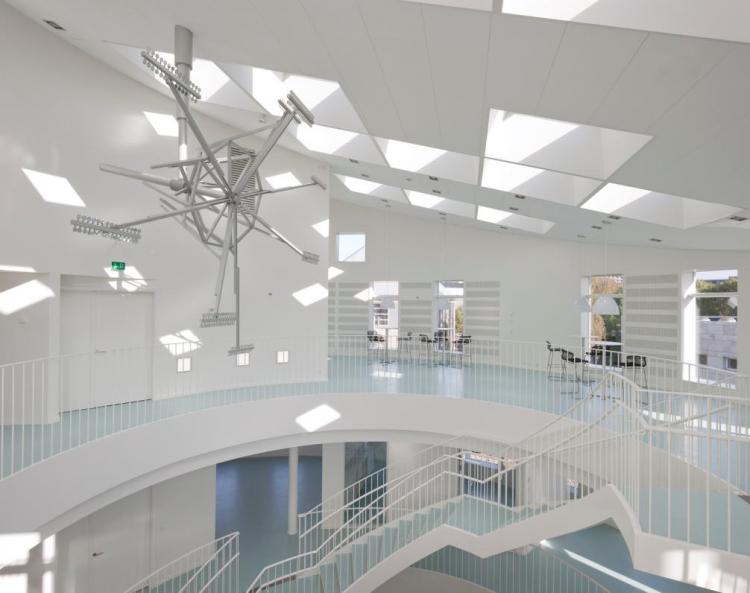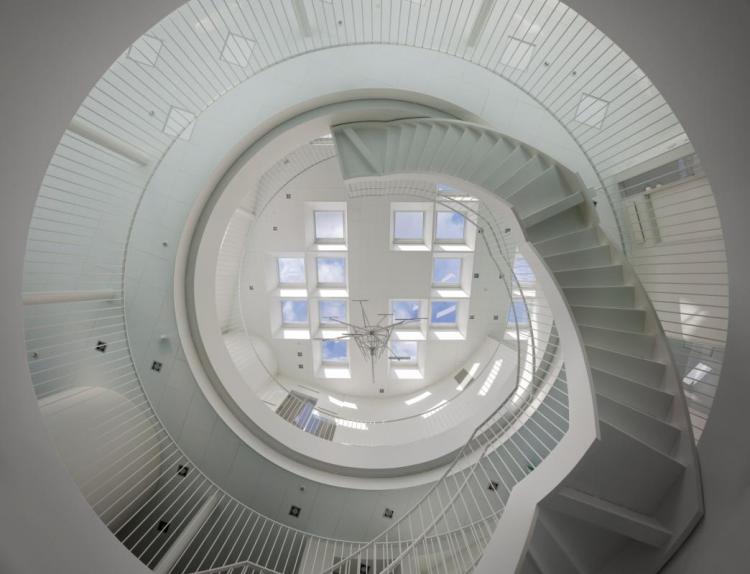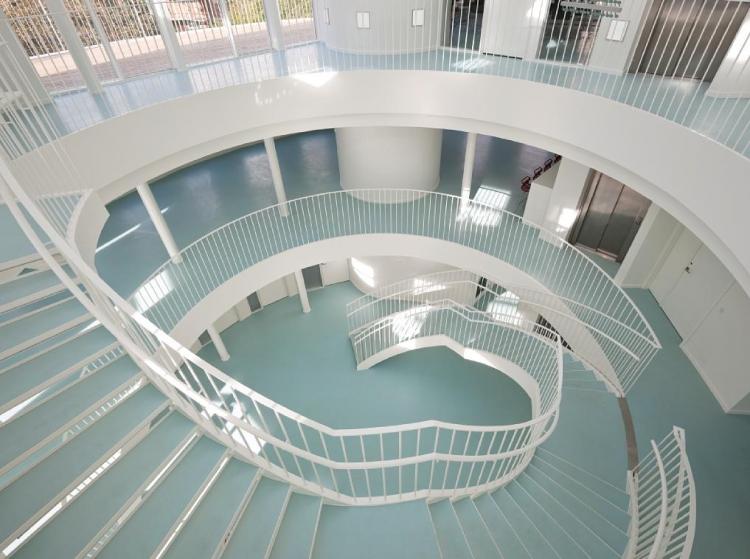Green Lighthouse
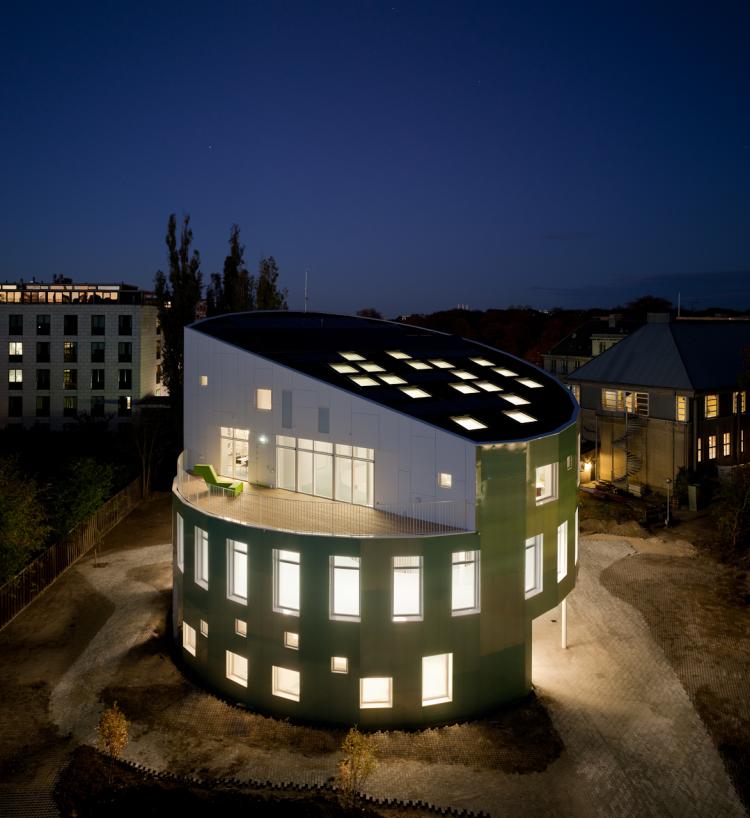
The purpose of the energy concept in Green Lighthouse is to make the house CO2 neutral. Green Lighthouse is a completely new experiment with an energy concept that consists of a combination of district heating, solar cells, solar heating and cooling, and seasonal storage.
This energy concept, which is developed by COWI, consists of a new type of solution; district heating is used to power a heat pump. By using district heating instead of electricity, less CO2 is produced. Furthermore, district heating leads to a far more efficient utilisation of energy.
The energy concept secures the best possible utilisation of renewable sources of energy. This interaction means that the energy concept utilises the sun not only for cooling during summertime, but also in order to improve the efficiency of the heat pump during winter. Solar heat energy is generated by directing solar heat through south facing windows. It is used for floor heating or, when not required, stored in the ground. A heat pump circulates solar heat, geothermal heat and cooling in the building. This ensures optimal utilisation of district heating, as it will only be used if solar heat is out of stock.
A combination of the following energy sources supply heating for Green Lighthouse:
- 35% solar energy from solar collectors on the roof and the storage of solar heat in the ground (geothermal heat) via a heat pump
- 65% eco-friendly district heating with a share of renewable energy of approx. 35%
- The heat pump increases the utilisation of the district heating by approx. 30%
The 76 m2 solar cells on the roof will be a major source of electricity in Green Lighthouse for lighting, ventilation and pumps. The annual cost of district heating is approx. 1,500 euro according to current exchange rates. The energy concept will be a real experiment and it is first time it is applied in Denmark. In the long term, this solution can be used in construction of offices and industrial buildings in most parts of Europe. The energy concept will undoubtedly be used when planning energy supply with focus on CO2 neutral construction in the future.
Green Lighthouse is not only a lighthouse when it comes to sustainability. Vital daylight has been thought into all details. Daylight is the primary light source in Green Lighthouse and daylight has been thought into the very architectonic principal idea itself. The house is circular and has an internal core, which simultaneously holds the central staircase, provides ventilation through the natural stack effect and draws a lot of daylight down through the house from the roof windows. When you are going to energy optimize a building as it is the case for Green Lighthouse it is decisive to integrate architecture, materials and light into an overall plan to obtain extremely low energy consumption.
Green Lighthouse has been designed as a deep circular house with an internal passage of light, which fetches light down into the building from a huge glass covered hole at the top. It provides lots of daylight, creates natural ventilation and lets the hot air out. The stairs utilize the room to its full extent and creates a good, open and clear flow in the house. In that way the architectonic and sustainable solutions will be combined.
The daylighting performance of Green Lighthouse has been specified using the daylight factor (DF) as performance indicator. In technical terms, the daylight factor should be at least 3 % in all working stations and minimum 2 % in hall ways. This means that daylight is evident in all rooms. Due to the construction of the automatic window shades, sunlight is reflected deeply into the building.
In Green Lighthouse, daylight is used as an active energy saving strategy. The building has the ability to function as a daylight lamp, at all times and in all weather conditions, transporting maximum exterior daylight into the interior through windows in the facade and the roof. Together with lux sensors and dimmer controls, the result is an efficient balance between available daylight and the need for artificial light, which results in minimum use of electricity. If the roof windows were removed and the same light levels were to be reached with artificial light, the need for electricity would be more than four times higher.
From an architectural point of view the house was inspired by the sundial and the movement of the sun around the house. The design underlines the fact that the sun is an important topic in science and one of the most significant energy sources in Green Lighthouse. The circular shape of the building also fits into the plot which is surrounded on all sides by other faculty buildings. The green colour of the façade fits in with the copper roofing material on the surrounding buildings.
